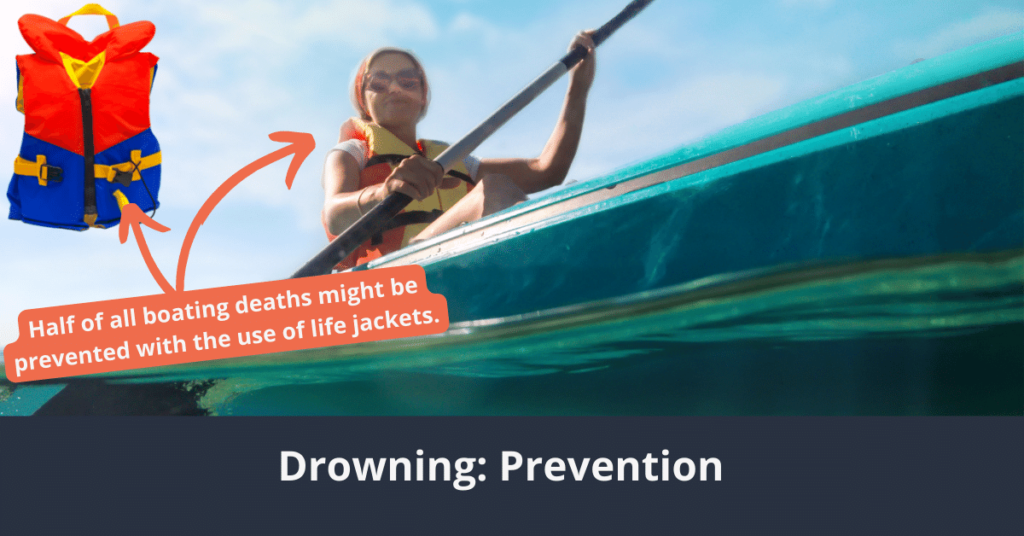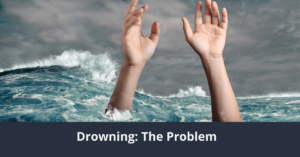Everything you will learn here
Safety Research and Tips To Keep Your Family Safe
Did you know drowning is one of the leading causes of death worldwide? Surprisingly, drownings are the leading cause of death in children aged 1-4 1,2 and account for over 9% of the global mortality rate, the third-highest in unintentional injury deaths 21 .
Despite drowning being a known risk, many lack the awareness of just how dangerous and widespread it is. In Part 1. “The Problem” of our three-part series will be focusing on statistics that show just how prevalent this devastating event is and the segments of our population that are most affected.
The purpose of this three-part series is to empower you to keep yourself and your family safe. Please find Part 2. Risk Factors, which focuses on how and where people drown and Part 3. Prevention, which focuses on the latest research in drowning prevention, arming with you the knowledge to keep you and your family safe!
-What Prevention Research Shows-
Swimming skills help
Taking part in formal swimming lessons reduces the risk of drowning among children aged 1 to 4 years.9,10 However, many people don’t have basic swimming skills. A CDC study7 about self-reported swimming ability found that:
- Younger adults reported greater swimming ability than older adults.
- Self-reported ability increased with the level of education.
- Among racial groups, African Americans reported the most limited swimming ability.
- Men of all ages, races, and educational levels consistently reported greater swimming ability than women, despite drowning at a significantly higher rate.
Seconds count—learn CPR
CPR performed by bystanders has been shown to save lives and improve outcomes in drowning victims. The more quickly CPR is started, the better the chance of improved outcomes.19
Life jackets can reduce risk
Potentially, half of all boating deaths might be prevented with the use of life jackets.16
-Tips to help you stay safe in the water-
Supervision is Key
Designate a responsible adult to watch young children while in the bath and all children swimming or playing in or around water. Supervisors of preschool children should provide “touch supervision”, be close enough to reach the child at all times.
Because drowning occurs quickly and quietly, adults should not be involved in any other distracting activity (such as reading, playing cards, talking on the phone, or mowing the lawn) while supervising children, even if lifeguards are present.
Use the Buddy System
Always swim with a buddy. Select swimming sites that have lifeguards when possible.
Seizure Disorder Safety
If you or a family member has a seizure disorder, provide one-on-one supervision around water, including swimming pools. Consider taking showers rather than using a bath tub for bathing. Wear life jackets when boating.
Learn to Swim
Formal swimming lessons can protect young children from drowning. However, even when children have had formal swimming lessons, constant, careful supervision when children are in the water, and barriers, such as pool fencing to prevent unsupervised access, are still important.
Learn Cardiopulmonary Resuscitation (CPR)
In the time it takes for paramedics to arrive, your CPR skills could save someone’s life.
Air-Filled or Foam Toys are not safety devices
Don’t use air-filled or foam toys, such as “water wings”, “noodles”, or inner-tubes, instead of life jackets. These toys are not life jackets and are not designed to keep swimmers safe.
Avoid Alcohol
Avoid drinking alcohol before or during swimming, boating, or water skiing. Do not drink alcohol while supervising children.
Don’t Hyperventilate
Don’t let swimmers or freedivers hyperventilate before swimming underwater or try to hold their breath for long periods of time. This can cause them to pass out (sometimes called “hypoxic blackout” or “shallow water blackout”) and drown.
Know the Weather and Conditions
Know the local weather conditions and forecast before swimming or boating. Strong winds, thunderstorms with lightning strikes, strong currents, rip-tides and choppy water are dangerous.
-Swimming in The Ocean, Lakes and Rivers-
Use U.S. Coast Guard approved life jackets
This is important regardless of the distance to be traveled, the size of the boat, or the swimming ability of boaters; life jackets can reduce risk for weaker swimmers too.
Know the meaning of warning flags
This is important regardless of the distance to be traveled, the size of the boat, or the swimming ability of boaters; life jackets can reduce risk for weaker swimmers too.
Watch for dangerous waves and signs of rip currents
Some examples are water that is discolored and choppy, foamy, or filled with debris and moving in a channel away from shore.
If you are caught in a rip current, swim parallel to shore. Once free of the current, swim diagonally toward shore.
-In and Around Swimming Pools-
Install Four-Sided Fencing
Install a four-sided pool fence that completely separates the pool area from the house and yard. The fence should be at least 4 feet high. Use self-closing and self-latching gates that open outward with latches that are out of reach of children.
Also, consider additional barriers such as automatic door locks and alarms to prevent access or alert you if someone enters the pool area.
Clear the Pool and Deck of Toys
Remove floats, balls and other toys from the pool and surrounding area immediately after use so children are not tempted to enter the pool area unsupervised.
-Stay Safe, Don’t Become a Statistic-
Go back to Part 1: The Problem
Go back to Part 2: Risk Factors
Sources
- Centers for Disease Control and Prevention, National Center for Injury Prevention and Control. Web-based Injury Statistics Query and Reporting System (WISQARS) [online]. [cited 2012 May 3]. Available from: URL: http://www.cdc.gov/injury/wisqars.
- CDC. Wide-ranging online data for epidemiologic research (WONDER). Atlanta, GA: CDC, National Center for Health Statistics; 2016. Available at http://wonder.cdc.gov.
- Cummings P, Quan L. Trends in Unintentional Drowning: The Role of Alcohol and Medical Care. JAMA, 1999; 281(23):2198-2202.
- Spack L, Gedeit R, Splaingard M, Havens PL. Failure of aggressive therapy to alter outcomes in pediatric near-drowning. Pediatric Emergency Care 1997; 13(2):98-102.
- Gilchrist J, Parker EM. Racial/ethnic disparities in fatal unintentional drowning among persons aged ≤29 years—United States, 1999–2010. MMWR 2014;63:421–6.
- Branche CM, Dellinger AM, Sleet DA, Gilchrist J, Olson SJ. Unintentional injuries: the burden, risks and preventive strategies to address diversity. In: Livingston IL, editor. Praeger handbook of Black American health (2nd edition): Policies and issues behind disparities in health. Westport (CT): Praeger Publishers; 2004. p. 317-27.
- Gilchrist J, Sacks JJ, Branche CM. Self-reported swimming ability in U.S. adults, 1994. Public Health Reports 2000;115(2–3):110–1.
- Irwin CC, Irwin RL, Ryan TD. Urban minority youth swimming (in)ability in the United States and associated demographic characteristics: toward a drowning prevention plan. Injury Prevention 2009; 15: 234-239.
- Brenner RA, Taneja GS, Haynie DL, Trumble AC, Qian C, Klinger RM, Klevanoff MA. Association between swimming lessons and drowning in childhood: A case-control study. Archives of Pediatrics & Adolescent Medicine 2009;163(3):203-10.
- Yang L, Nong QQ, Li CL, Feng QM, Lo SK. Risk factors for childhood drowning in rural regions of a developing country : a case-control study. Injury Prevention, 2007; 13:178-182.
- U. S. Consumer Product Safety Commission. Safety barrier guidelines for home pools [online]. [cited 2012 May 3]. Available from URL: http://www.cpsc.gov/cpscpub/pubs/pool.pdf
- Thompson DC, Rivara FP. Pool fencing for preventing drowning in children. Cochrane Database of Systematic Reviews 2000; 2.
- U. S. Consumer Product Safety Commission. Submersions related to non-pool and non-spa products, 2011 report.[online]. [cited 2012 May 9]. Available from URL: http://www.cpsc.gov/LIBRARY/FOIA/FOIA11/os/nonpoolsub2011.pdf
- Pelletier AR, Gilchrist J. Fatalities in swimming pools with lifeguards: USA, 2000-2008. Injury Prevention, 2011;17:250-253.
- U.S. Coast Guard, Department of Homeland Security (US). Recreational Boating Statistics – 2010 [online]. [cited 2012 May 3]. Available from: http://www.uscgboating.org/assets/1/workflow_staging/Page/2010_Recreational_Boating_Statistics.pdf
- Cummings P, Mueller BA, Quan L. Association between wearing a personal floatation device and death by drowning among recreational boaters: a matched cohort analysis of United States Coast Guard data. Injury Prevention 2011;17:156-159.14.
- Driscoll TR, Harrison JA, Steenkamp M. Review of the role of alcohol in drowning associated with recreational aquatic activity. Injury Prevention 2004;10:107–113.
- Lhatoo SD, Sander JWAS. Cause-specific mortality in epilepsy. Epilepsia 2005; 46(Suppl. 11):36–39.
- Kyriacou DN, Arcinue EL, Peek C, Kraus JF. Effect of Immediate Resuscitation on Children with Submersion Injury. Pediatrics, 1994; 94 (2): 137-142.
- World Health Organization, Global Report on Drowning, available at URL:
https://www.who.int/publications/i/item/global-report-on-drowning-preventing-a-leading-killer



